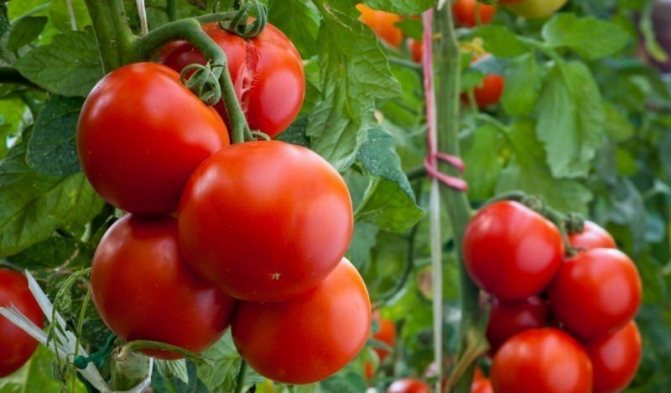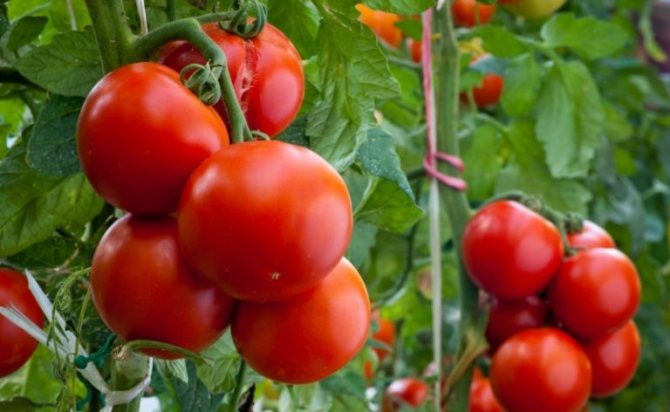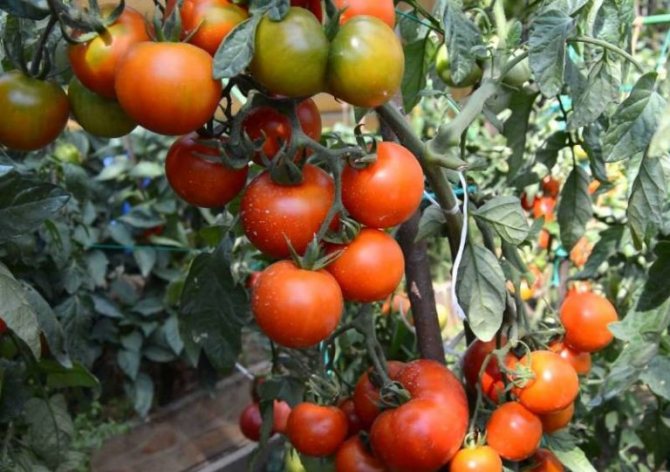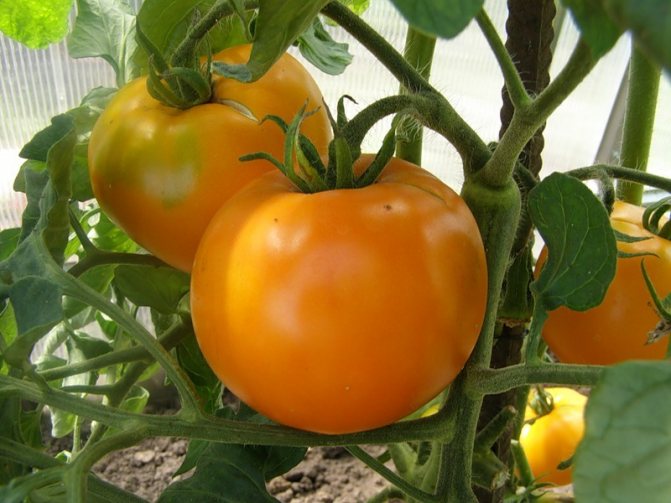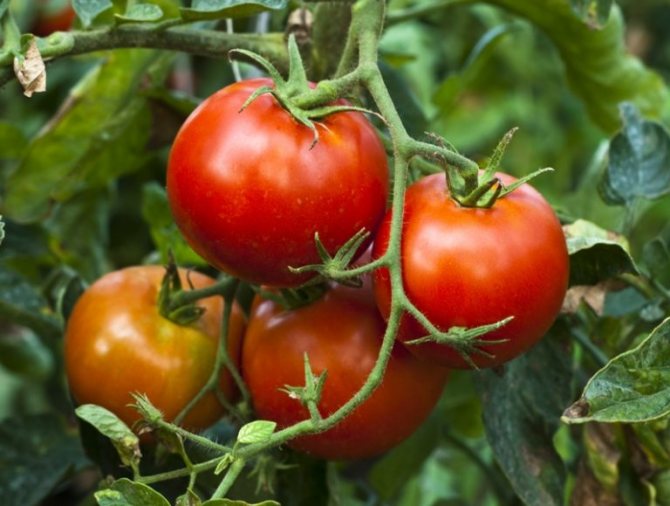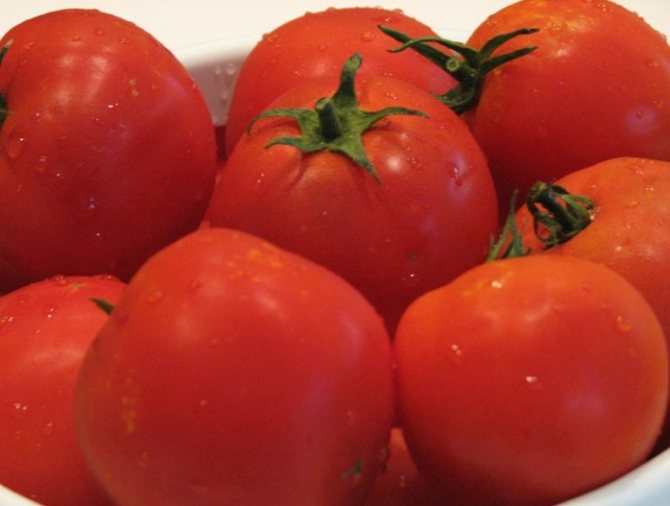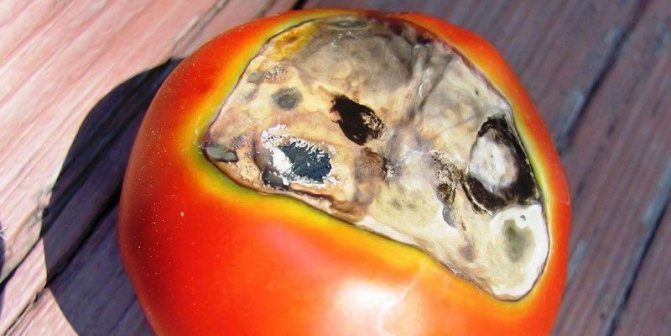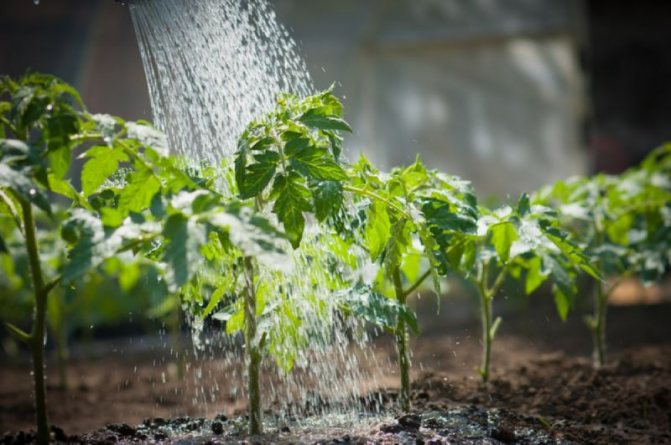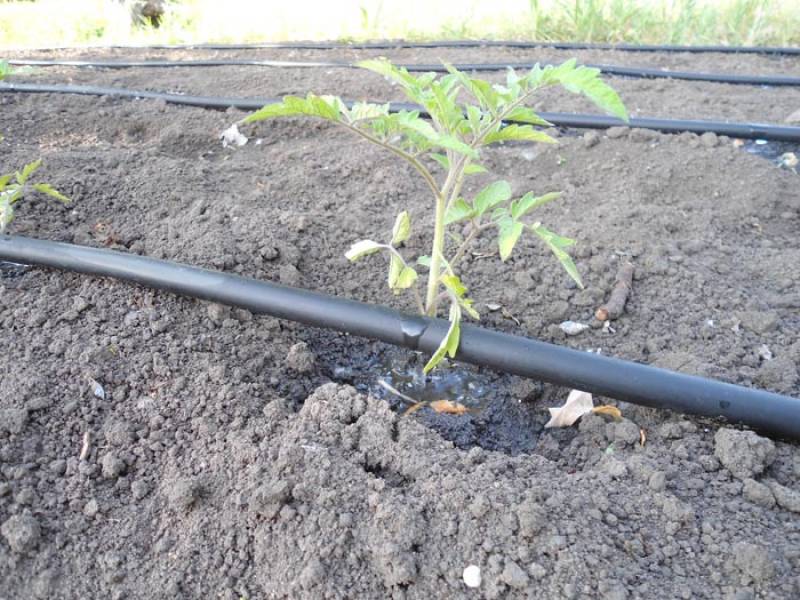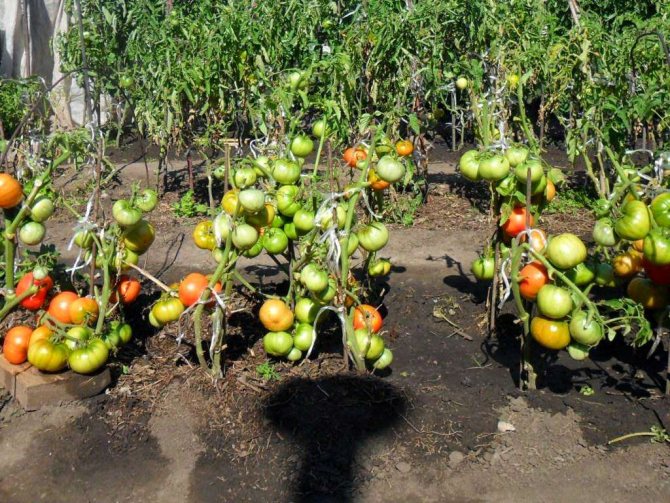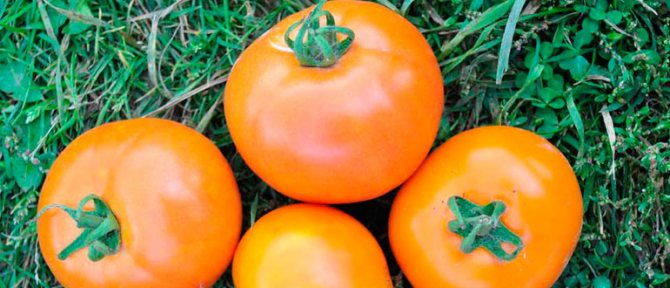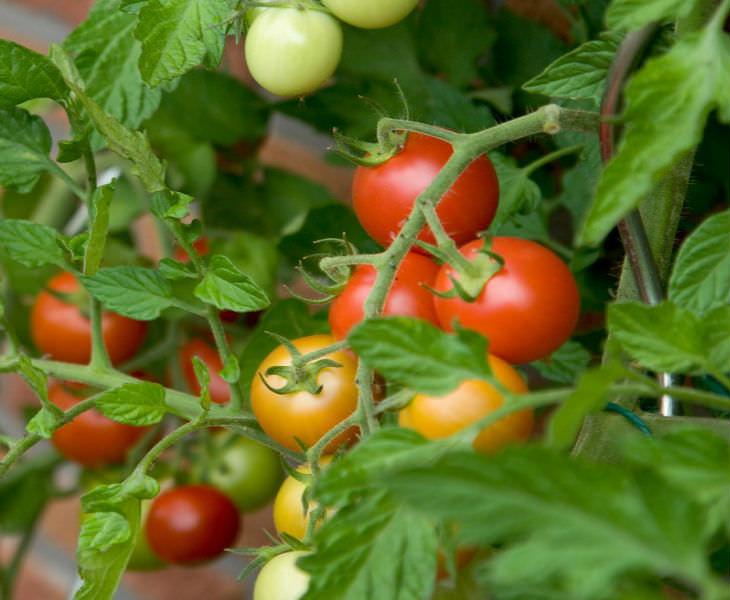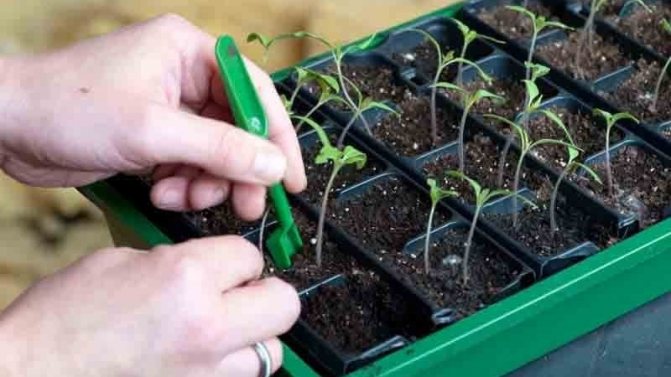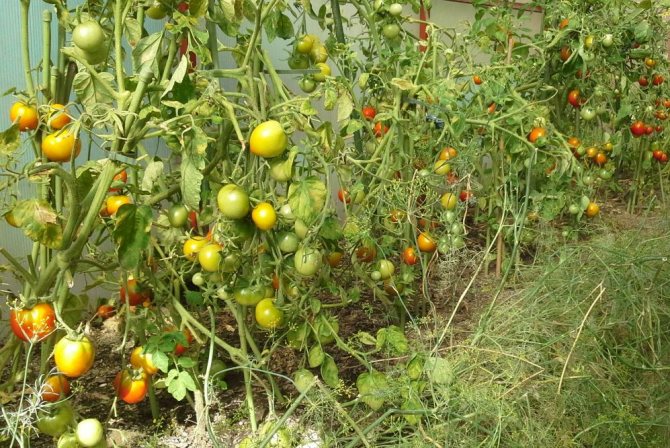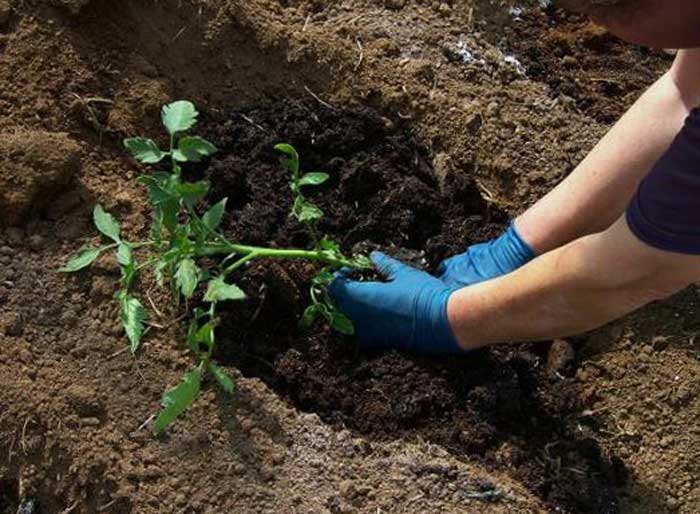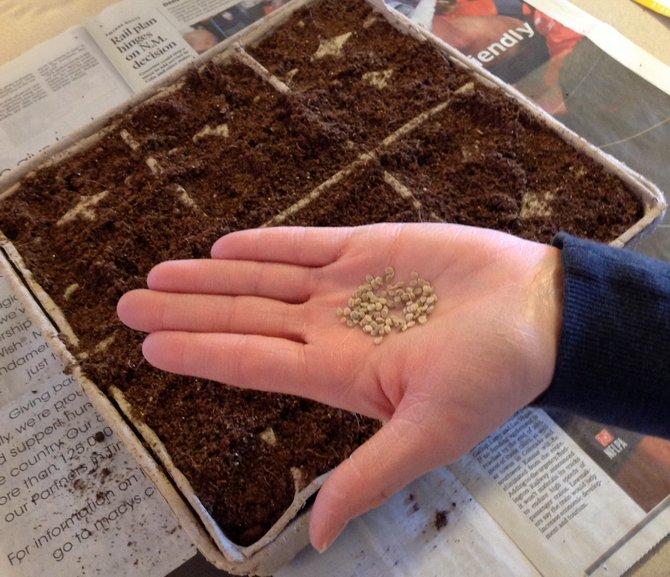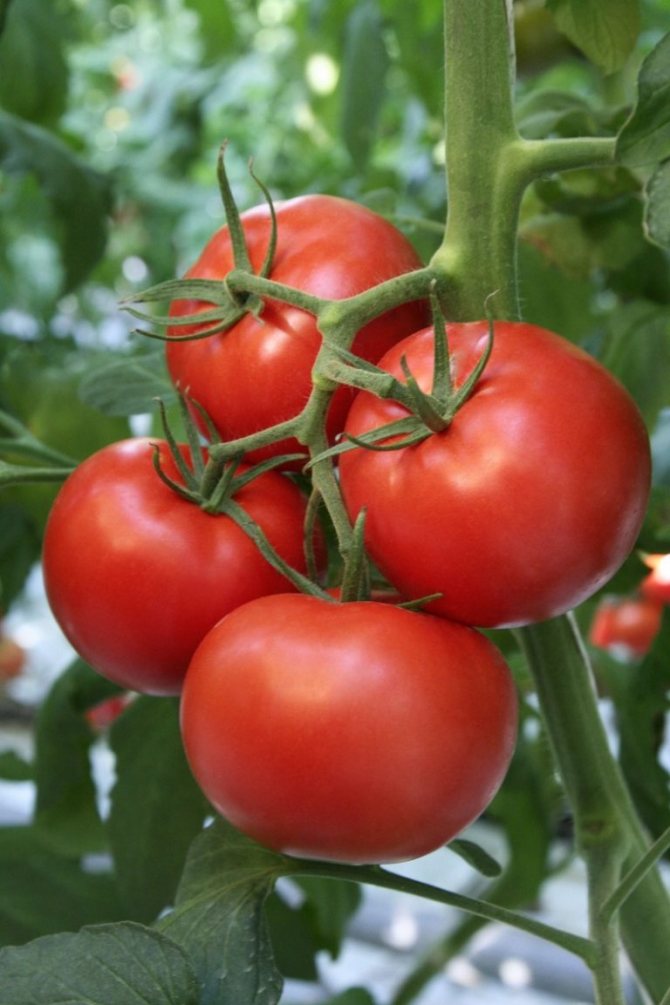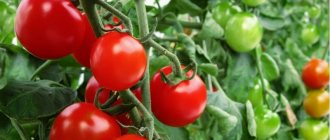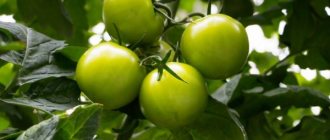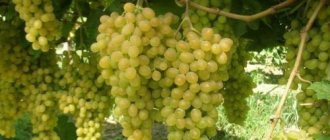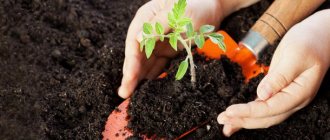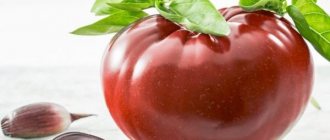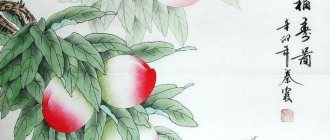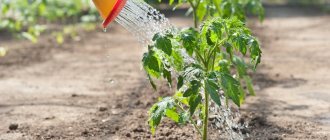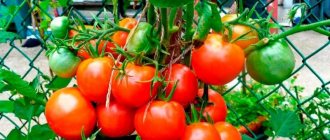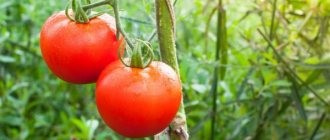Category: Tomatoes
In preparation for the vegetable season, people decide which tomatoes to plant in their area. Andromeda tomatoes are able to please with an early harvest, reviews, photos of which confirm the characteristic declared by the breeder. This variety was bred at the end of the 20th century by a Russian breeding specialist. It is worth mentioning that this tomato has several subspecies, they are all endowed with different colors, in addition, each has its own quality differences.
- Tomato Pink Andromeda (video)
- Planting and caring for the plant
- The best tomatoes (video)
- Reviews and advice of gardeners
Description
Experienced gardeners, before giving preference to one or another variety, will always pay attention to its characteristics. So when choosing a variety of Andromeda tomatoes, study the description of this variety. Such a tomato is one of the most popular and widespread vegetables in our country today. True gardeners will need a lot of time and skillful hands to get ripe, juicy fruit. When choosing seedlings for planting, first of all, they pay attention to first-class tomatoes, one of which is the Andromeda tomato variety.
Stages of development
The Andromeda tomato variety grows up to a certain point. Development stops when a sufficient number of 4-5 brushes are formed on the bush.
Hybrid subspecies Andromeda F1 in greenhouse conditions grows 1m in height. If the Andromeda bush is grown outdoors, the height will be a maximum of 60-70cm in height. The branchiness of the variety is average.
External features
The foliage cover of Andromeda f1 is golden and has a light shade. Tomato Andromeda has a golden fox and an emerald-silver hue. The tomato inflorescence is simple. But it can have an average of 5-7 fruits. The first inflorescence appears on the 6th leaf, then after one.
The Andromeda tomato can be of three colors: red, pink, yellow. The fruit has a smooth surface, rounded slightly flattened shape. The tomato variety Andromeda f1 is quite dense and has an even color.
Fruit weight
The weight of the variety depends on the subspecies. Basically, the average weight of the fruit is 70-140g. Tomato Golden Andromeda is large, its weight is 100-140g. Tomato Pink Andromeda has a weight of 90-120g. But among these fruits there were also tomatoes that were weighing 300-320g.
The Andromeda hybrid has a very good yield, 9-10 kg per square meter, depending on which subspecies. In a good season, the harvest can exceed 12kg.
Method of use
Tomatoes of the Andromeda F1 variety are cold-resistant. The shelf life in cool rooms is 30-120 days. Fruiting begins in late August - early September.
The variety is suitable for fresh and canned consumption... It can be used for a wide range of pickles production. In cooking, tomatoes are added to salads, mousses, cocktails, pizzas. The calorie content of a tomato is 20 kcal. The nutritional characteristics of Andromeda tomatoes are excellent.
The tomato contains 0.6 g of proteins, 0.2 g of fat, 0.8 g of dietary fiber, 94 g of water. The dry matter content varies from 4.0 to 5.2%. The sugar content is 1.6-3.0%. The amount of ascorbic acid per 100 g of the product is 13.0-17.6 mg. The acidity is 0.40-0.62%.
Important! Andromeda F1 tomatoes go well with dill, horseradish, caraway seeds, eggs, eggplant and meat. Can be used in sauces, first and second courses.
disadvantages
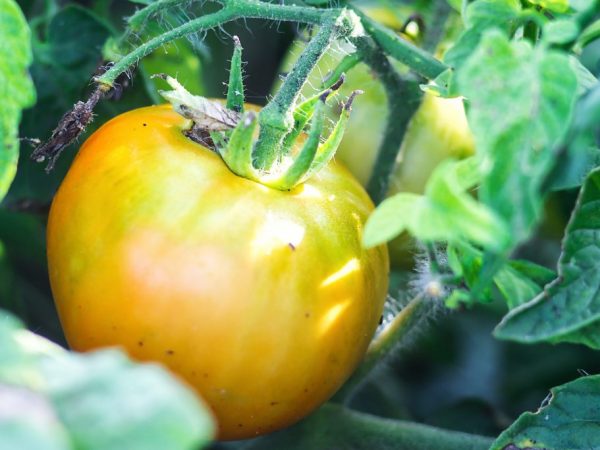
The variety is infected with late blight
As in every vegetable, having positive qualities, there are many or few negative characteristics. The bad qualities of the Andromeda f1 hybrid tomato are:
- Weak roots and poor root system;
- It is infected with late blight;
- To get a good harvest, it requires a lot of feeding;
- Even though the plant tolerates low temperatures well, in cold regions these tomatoes are bred and grown in greenhouses.
This type of vegetables has been tested by time, no matter how difficult the season is, there has never been such a variety that this variety did not give a harvest. You can find additional information, reviews about Andromeda tomatoes and photos on the website.
Diseases
According to the characteristics and descriptions, the immunity of the Andromeda variety is above average. However, the bushes can infect late blight, apical rot, or other diseases.
Late blight is a fungal disease that occurs most often in damp cold weather. It appears as black spots on tomatoes, brown spots on the leaves. For the treatment of the disease, fungicides, Bordeaux mixture, and copper sulfate are used.
Preventive measures:
- you should not plant tomatoes in areas after carrots, beets, cucumbers;
- thickening of the rows should not be allowed;
- watering is best done in the early morning or after sunset. Moreover, it is not allowed to get water on the tomatoes;
- in wet weather, it is advisable not to water at all. In such cases, it is recommended to loosen the aisle;
- it is necessary to feed plants with phosphorus, potassium to strengthen the immunity of plants.
Subspecies
Golden Andromeda
Hybrid Andromeda golden tomato is most often found on farmer chernozems of fields and gardens, on the lands of the Caucasus. Ripens one of the first among its relatives. Cultivation can be both in free soil and in greenhouse conditions. It is the Golden Andromeda, a special tomato description that says that this hybrid is able to surpass its counterparts in yield twice.
This species, as already mentioned, has a determinant bush, up to a meter high. Gardeners recommend planting schematically 50x40.
Tomatoes have a rounded slightly flattened shape, a slightly ribbed surface. The color of the vegetable is yellow or orange. The leaf of the bush is medium, dark in color. According to the standard, the first brush is located above 5, and then after two sheets. About 5-7 fruits are formed on one brush, but in rare cases there are up to 10. A detailed description of the Golden tomato, additional reviews, criteria and photos can be found on the website.
Pink andromeda
Andromeda golden tomatoes first appeared on the territory of Russia in 2005. Just like Pink Andromeda, these vegetables ripen on the lands of the northern part of the Caucasus. The variety Pink Andromeda was bred by the breeder A. Mashtakov.
Determinant type, medium branching. The leaf is medium in size and has a bright green color. The inflorescence starts with 5 leaves. On the brush, on average, 4 to 8 vegetables. Tomatoes Pink Andromeda are small, their weight is only 90g. Deep raspberry pink tomatoes. There can be from 4 to 6 seed chambers in a vegetable. This type of vegetables is heat-resistant, but there are times when the variety loses its color. Detailed description and characteristics of this type of tomato on the site. Also there you can find photos and reviews.
Fruit characteristics
The Andromeda fruit is highly rated. These are quite large tomatoes - their average weight can vary from 75 to 125 grams. The yield can be different, but if all the stars converge, more than 12 kilograms can be removed from one bush.
The variety has various modifications - for example, gold or pink Andromeda.There is no particular difference in care, only in appearance in size. All varieties are characterized by an excellent appearance - they have the correct shape and dense skin, therefore they are well stored.
In cooking, the variety is considered rather universal - tomatoes can be eaten fresh or as part of salads, or they can be used for the production of various preparations.
Growing and care
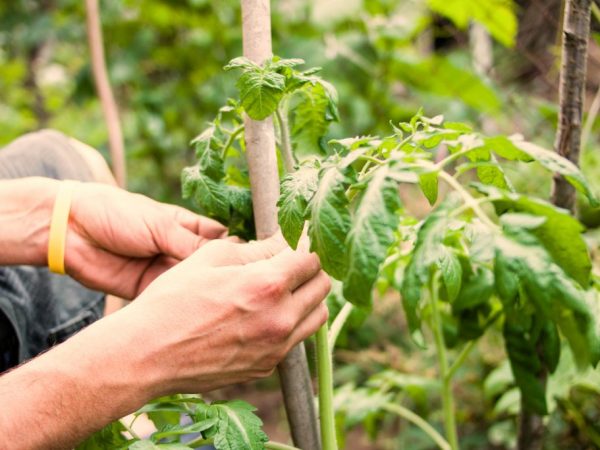

Plants need a garter
The seeds are recommended to be bought annually. Seed cultivation of this variety takes place until mid-March. After the appearance of the first leaves, the main root is shortened. This is done in order to enhance the development of seedlings. As already mentioned, Andromeda tomatoes have weak roots, which is why they constantly need replenishment with useful substances. Watering occurs depending on the condition and dryness of the soil. In the hot season, watering is carried out two or even three times more often than the usual watering rate.
Passionking is performed in one stem. In the future, the tomatoes must be tied up.
The harvest takes place from mid-July to the end of September. But collecting seeds is strongly discouraged. Hybrid tomatoes are not predictable as it is not known what variety can be obtained from their seeds.
How to plant Andromeda on the site
Tomatoes of the Andromeda variety are grown by the seedling method, transplanting already strengthened plants into open ground or greenhouses.
Timing
The timing of the transfer of seedlings is calculated based on the weather characteristics of the growing region. For southern latitudes, planting operations begin in the second half of May. In temperate climates, tomatoes are transplanted in the first week of summer.
Soil preparation
For growing a vegetable crop, they choose flat, well-lit areas, closed from gusty winds and drafts.
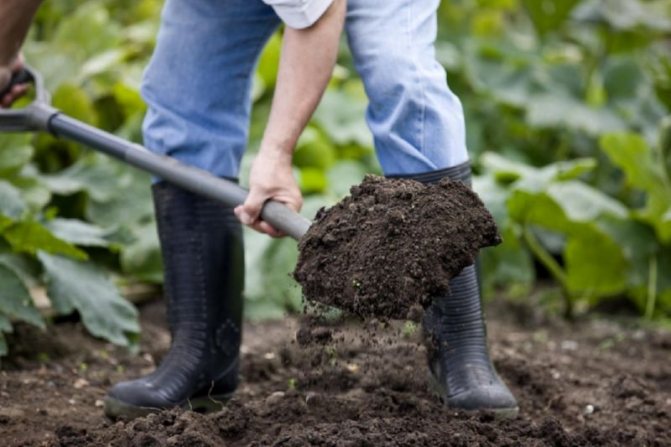

The soil for tomatoes is prepared in the fall.
- The site is carefully dug up and loosened.
- The soil is mixed with humus, organic and mineral substances.
- If the soil contains excess acids, then the soil is mixed with lime.
- Before the start of planting work, the beds are again loosened and irrigated.
Important! Nearby groundwater increases the risk of rhizome rot and the development of fungi and bacteria.
Growing seedlings
- Tomato cultivation begins with planting seeds for seedlings.
- Seeds of hybrid varieties do not require additional processing, so they are planted immediately in prepared containers with fertile soil.
- The planting material is placed in grooves or holes, no more than 1.5–2 centimeters deep.
- From above, the seeds are dropped with earth, the containers are covered with foil and sent to a warm, lighted place.
- As soon as sprouts appear, the covering material is removed.
- Seedling care requires timely watering and mineral fertilizing.
Expert opinion
Stanislav Pavlovich
Gardener with 17 years of experience and our expert
Ask a Question
Advice! 2 weeks before the transfer of plants to a permanent place of residence, the seedlings are hardened. To do this, containers with bushes are taken out into the street and left for 3-4 hours. After the hardening procedure, the plants tolerate transplanting more easily and quickly adapt to new conditions.
Landing in open ground
A transplant into open ground is done after 2–4 tomato leaves appear on the bushes, and the soil warms up to a temperature of + 18 ... + 20 degrees.
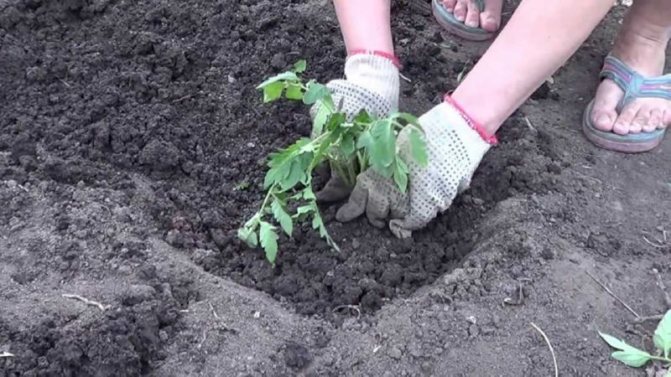

- On the prepared bed, planting holes are dug with a depth and width of 15 to 25 centimeters.
- The distance between the bushes is 30-40 centimeters, between the ridges up to 60 centimeters.
- Seedlings are carefully removed from the containers along with the earth lump. The rhizomes of the variety are weak, they can be damaged during planting.
- Pits with bushes are covered with fertile soil and irrigated with warm water.
- After the end of the work, the beds are mulched with any organic material.
Important! Bushes need additional support.Therefore, when transplanting seedlings, support stakes are driven into the holes.
Diseases
Tomatoes, like other vegetables, can carry disease. The disease can cause colossal damage to the crop.
Late blight - this disease is very dangerous if it is not detected in time. In the worst case, it is capable of destroying most of the crop.
The characteristic of late blight in infection of the aerial part of the tomato, as a result, dark spots covered with bloom appear. Subsequently, the tomatoes begin to rot. To avoid this disease, you need to monitor the correct crop rotation and complementary foods should be introduced on time. Another common disease is alternaria. An improperly equipped greenhouse is one of the possible causes of the disease. This virus loves heat and humid air. The characteristic of this disease is in dark spots on the leaves, which eventually join together.

